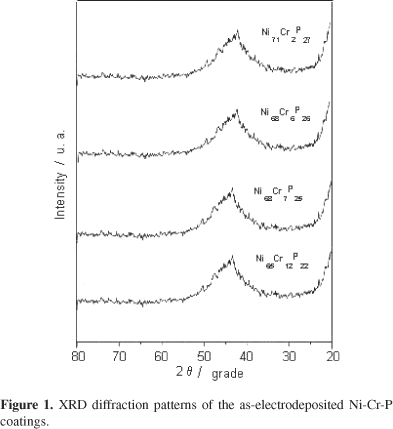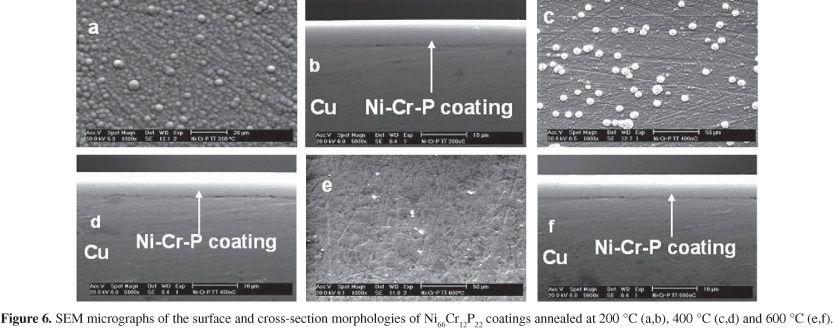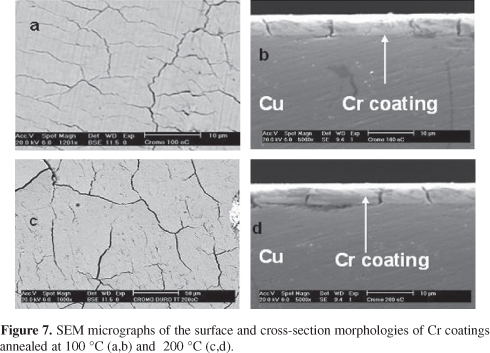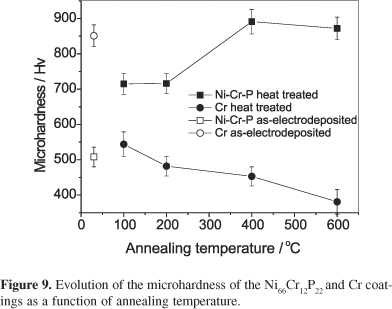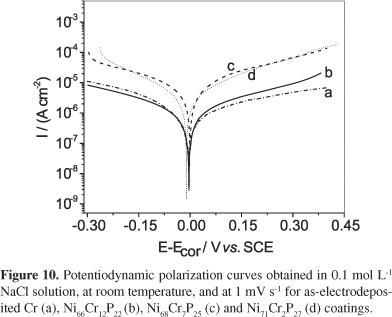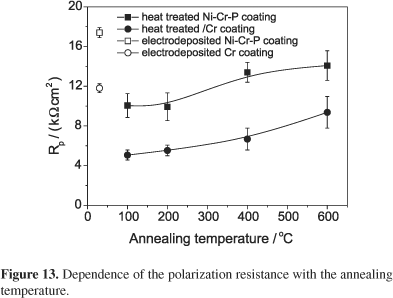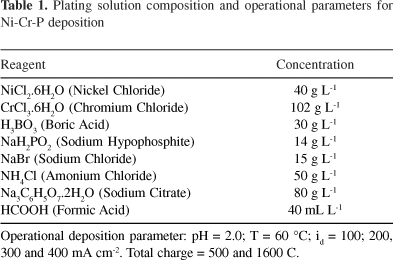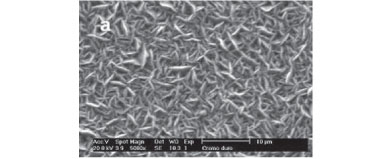Structural and morphological characteristics of the electrodeposited Cr and Ni-Cr-P coatings and their corresponding electrochemical behaviors in chloride aqueous medium were investigated here. All coatings were electrodeposited on copper. Cr coatings were obtained from an industrial plating solution and amorphous Ni-Cr-P coatings were successfully obtained at 60ºC in the range of 100 to 400 mA cm-2, using a plating solution at pH 2 containing 40 g L-1 NiCl2.6H2O; 102 g L-1 CrCl3; 14 g L-1 NaPH2O2; 30 g L-1 H3BO3; 15 g L-1 NaBr; 50 g L-1 NH4Cl, 80 g L-1 Na3C6H5O7 .2H2O and 40 mL L-1 HCOOH. The coatings were obtained using constant charges of 500 and 1600 Coulombs. The characterization of the coatings was carried out by Scanning Electron Microscopy (SEM), X-ray Diffraction (XRD), Differential Scanning Calorimetry (DSC) and Energy Dispersive X-ray Analysis (EDX) techniques. The electrochemical behavior of both coatings was evaluated by potentiodynamic polarization curves, at room temperature, in 0.1 mol L-1 NaCl aqueous solution. It was not observed cracks on the electrodeposited Ni-Cr-P coatings and the surface morphology was characterized by the presence of spherical nodules. The crystallization of these coatings occurred at 325 °C with the formation of Ni and Ni3P phases. All the annealed Cr coatings showed cracked surfaces. The presence of cracks impairs the mechanical and corrosion resistance properties of Cr coatings. The hardness of the Ni-Cr-P was increased with the increase of the annealing temperature. Spherical noodles were absent in the surface of as-annealed Ni-Cr-P coating which it was associated with the diffusion of Cr to the surface and cracks were not observed in any annealing temperature. Among the various electrodeposited Ni-Cr-P coatings studied here, the Ni66Cr12P22 coating presented the best corrosion behavior and it is a potential candidate to substitute Cr in industrial application, mainly at operational temperatures that exceed room temperature.
corrosion; crystallization behavior; hardness; Ni-Cr-P; Cr

